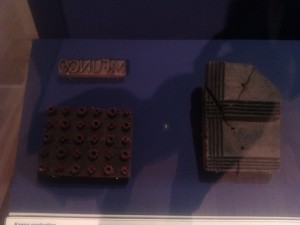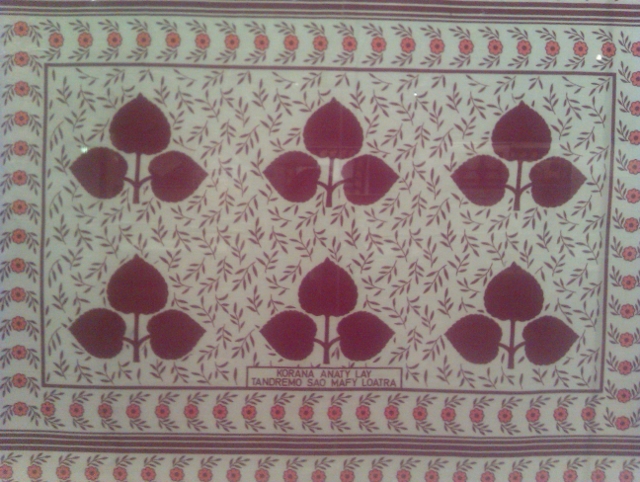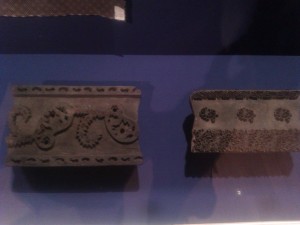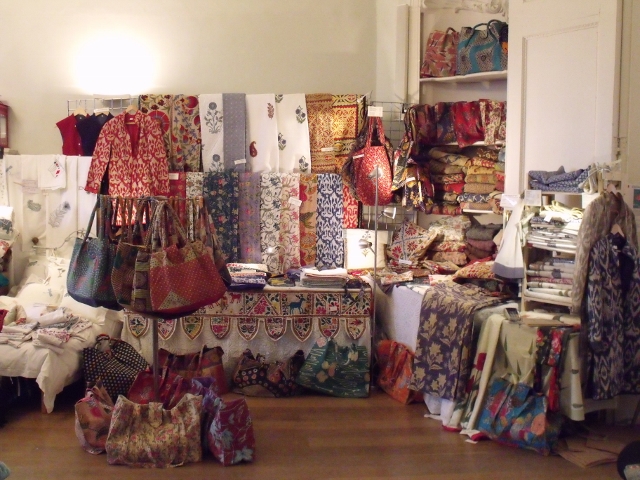A recent exhibition at the British museum displayed and documented a rich Africa textile tradition. In a previous blog post, I wrote about an exhibition and symposium entitled ‘Social Fabric‘ in which fabric was used as a metaphor for society, and often a symbol of colonial power. On the other hand, the recent exhibition at the British Museum – Social Fabric: African textiles today displays cloths that directly and graphically express the wearer’s political, social, religious, sexual and emotional views and concerns.
The textiles on display were kangas – textiles I recognised but knew very little about. I immediately remembered a picture I had cut out of the Guardian, of Masai women queuing up to vote in the Kenyan presidential and parliamentary elections, all wearing these brightly coloured, bold and striking cloths wrapped around them and their babies on their back or in their arms. When I saw this picture I immediately wanted to know more about these textiles, and so I was thrilled to learn about this exhibition.
Kangas are rectangular pieces of cloth mainly worn by women in Eastern Africa, although are sometimes worn by men in private, or by men of the Masai tribe in public. The cloths are distinguished by a central printed inscription and bright bold patterned borders. They usually have a strong message that can only be communicated through wearing these cloths, and also play an important part in rites of passage ceremonies.The kangas have an interesting history and like many other textile traditions, have cross cultural links. The information in the exhibition tells us that the first kangas were created in the late 19th century by sewing together six printed handkerchiefs, called lenco, which the Portuguese had traded to Africa for centuries. It is interesting that the distinctive wax resist printed fabric we have come to associate with African clothing culture did actually originate in Indonesia, but the Dutch took over the production and exported to Africa. Indeed, many of the cloths synonymous with African identity, actually came from their European colonial rulers.
The kangas were soon made using whole pieces of cloth and the designs were hand printed using wooden blocks. Wooden blocks were eventually superseded by factory screen printing, although block printing did continue for a long time along with the factory printed cloths exported from Europe. The wooden blocks were either carved locally – the Swahili people being renowned for their woodcarving – or they were imported from India. It was not specified where exactly in India, but I wonder whether the renowned areas for block making – Pethapur in Gujarat, Sanganeer and other areas of Rajasthan or Pilakhuwa in Uttar Pradesh would have produced these. Indeed patterns in the kanga borders though very simplified, share similarities with flower borders in Indian printed cloths including ajrakh and Persian and Moghul designs of Rajasthan.

Following the two wars when factory produced cloth diminished and block printing took over, in the late 1960s, the factory production of kangas shifted from Europe to Eastern Africa, Japan, Pakistan and India.
As the market for the kangas is very specific, the women they are made for, are regularly consulted about the designs. While close consultation between makers and their market is common in traditional communities (for example, this has always been the case with the the khatri dyers in Kutch for their local market), I find it interesting that this still happens, as the production happens so far away from where the wearers live.
This exhibition was important in highlighting how textiles are not always just for decoration, and the patterns are designed carefully not just to look nice, but to provide a bold, clear statement. It shows how textiles can affect the social and political milieu of a community and society. In particular, kanga cloths have had little recognition in the wider world, so this exhibition has been important in opening up avenues for further research and increasing awareness.
Further Reading
S.Clark, ‘The politics of pattern: the interpretation of political and national iconography on kanga cloth’, in H.Arero & Z. Kingdon (ed.), East African Contours, (London, Horniman Museum, 2005), pp. 85-97
D. Parkin, ‘Textile as commodity, dress as text: Swahili kanga and women’s statements’, in R. Barnes (ed.),Textiles in Indian Ocean Societies, (London and New York, Routledge), 2005, pp. 47-67
C. Spring, ‘Not really African? Kanga and Swahili culture’, in H. Arero & Z. Kingdon (ed.), East African Contours, (London, Horniman Museum, 2005), pp. 73-84



One Comment
Pingback: